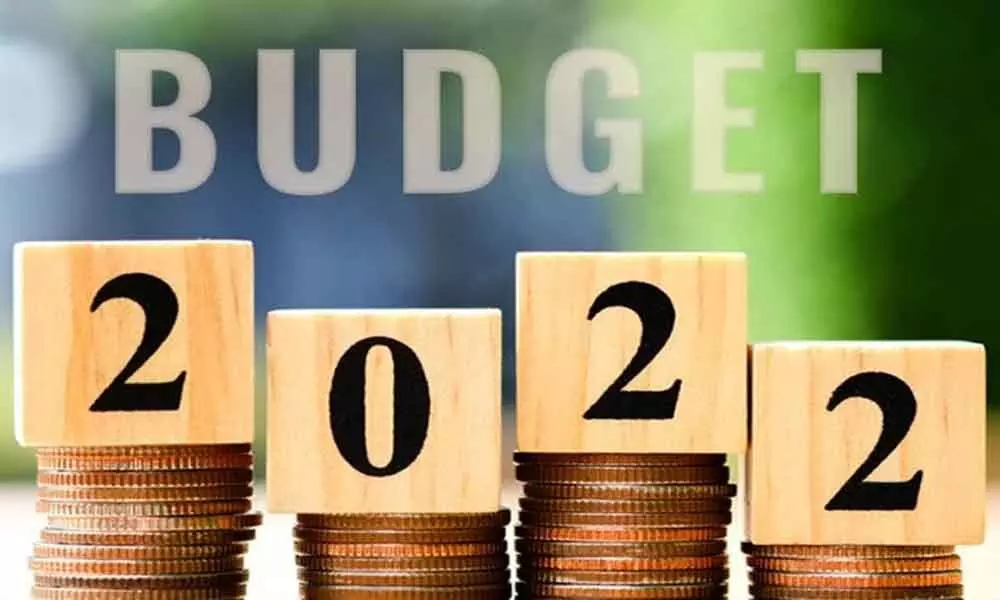It's a well-planned Budget for all the sectors
The Budget 2022-23 is a continuation of reform-oriented budgets of NDA government in the last few years.
image for illustrative purpose

The Budget 2022-23 is a continuation of reform-oriented budgets of NDA government in the last few years. It touched all the areas including agriculture, multi-modal transport, utilisation of technology in agriculture, digitisation, taxation on cryptocurrency and the launch of digital rupee by RBI, etc. Reforms in the all the sectors have been covered.
There are no freebies and special incentives given to the middle-class salaried employees. However, it is totally employment-oriented budget, fueling 8.5 per cent economic growth, provided there are no hiccups in terms of war in Ukraine, other geographical disturbances and crude prices stabilisation. Certainly, the growth can be more than 8.5 per cent in the coming year.
On the agriculture front, usage of drones and developing drone shakti for the services in terms of spraying of insecticides, pesticides and fertilizers will go a long way in modernising agriculture. 'One station one product model' for suppliers and also introducing 400 energy efficient trains, 100 PM Gati Shakti cargo terminals, are certainly going to support the agriculture sector.
With regards to MSMEs, a lot of encouragement has been given in the form of duty exemptions for capital goods, both imports and exports. Above 350 products have been rationalised, which will boost local MSMEs.
Hospitality sector, which is brought under priority sector, is highly affected by Covid. Consequently, under the Emergency Credit Line Guarantee Scheme (ECLGS), the hospitality sector will get Rs 50,000 crore credit guarantee that will hugely support hotels and restaurants.
Five river linkage projects are announced. The draft DPRs have been completed and the works will start with the cooperation of the respective State governments. The government's focus is now on agriculture universities and urban development to meet the requirement of urbanisation in the future.
The one class one TV channel scheme, e-vidya channel and 200 channels are being introduced to encourage digital education. This move is to make up for the loss in the education sector due to the Covid pandemic. The government has announced that education will be provided in local language or in mother tongue, which is a very important move.
The move that regular banking operations will be carried out in the post offices will help in improving the village level banking. Postal banks will work with the CBS system of other banks through an integrated banking service.
Budget also mentions battery swapping policy, under which charging stations are established for seamless journey. Solar EV and PV modules manufacturing will be brought under PLI scheme, aiming at the usage of 220 GW solar power by 2025.
Other important development is mandating 5-7 per cent usage of biomass pellets in all the thermal plants to reduce urban pollution. With this, dependence on coal will come down.
As we have been storing lot of cloud computing data outside India, bringing that to India will help in saving dollars by using data storage systems within the country. In the last year, 54 per cent indigenous technology was developed by Defence sector; this year they made it mandatory at 68 per cent from indigenous procurement, which will help production in India and support Indian manufacturers to export also.
Focusing on States, Rs 1 lakh crore fund assistance will be provided to the States with free bonds for developing infrastructure for multi modal transport systems under under PM Gati Shakti scheme.
However, the Budget has not fulfilled the middle-class expectations as there is no change income tax slabs and exemptions, but for payment of annuities for parents of differently abled children have been given tax exemptions. All virtual digital assets will be taxed at 30 per cent. A TDS of 1 per cent is also proposed on profits on cryptocurrency trading, to discourage people from indulging in cryptocurrency trading. RBI will launch digital currency so that the people who are interested in trading in cryptocurrency will do it in Indian rupees so that we don't lose forex from India. Broadly, we can say this Budget is a very reform-oriented one. The industry also welcomed it in a positive way. The markets are also buoyant. Overall, it's a well-planned and well-drafted budget.
(The Author is Banking expert)

